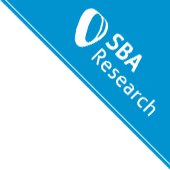2nd International Workshop on Security Engineering for Cloud Computing (IWSECC 2019)
to be held in conjunction with the 14th International Conference on Availability, Reliability and Security
(ARES 2019 –
http://www.ares-conference.eu
)
August 26 – August 29, 2019, University of Kent, Canterbury, UK
Cloud computing importance and presence in current panorama is apparent, but still some challenges regarding security and privacy are open. The application of software engineering to Cloud computing is a primary aspect to obtain a systematic approach to the development, operation and maintenance of software. There is no perfect security and when a cybersecurity incident occurs, digital investigation will require the identification, preservation and analysis of evidential data. This workshop aims to explore techniques that enable security mechanisms to be engineered and implemented in Cloud systems.
We expect to attract over 25 high-quality submissions. Initially, our plan is to accept 8 full papers and 4 short papers, but this of course will depend on the received submissions. Therefore, the acceptance rate for full papers will be below 25%, while for full+short papers it could reach 30%. This number of accepted papers, together with a keynote talk and a final joint discussion session will fit in one full day.
The technical topics of interest for this workshop include, but are not limited to:
Privacy Engineering
Security Engineering methodologies
Security Patterns
Secure Architecture Evolution
Forensics in Clouds
Security analysis, challenges, goals and risks
Security Engineering Theory and Practice
Distributed authentication and authentication
Real time analysis of security (log) data for alert generation
Remote collection of evidence (e.g. from cloud servers)
Fog Computing Security & Privacy
Important Dates
| Submission Deadline | May 18, 2019 |
| Author Notification | June 10, 2019 |
| Proceedings Version | June 23, 2019 |
| ARES EU Symposium | August 26, 2019 |
| Conference | August 26 – August 29, 2019 |
Program Chair
Antonio Muñoz (University of Malaga, Spain)
Eduardo B. Fernandez (Florida Atlantic University)
Technical Program Committee (TBD)
ASTUDILLO HERNÁN, Universidad Técnica Federico Santa María, Chile
BOYD, COLIN, Queensland U. of Tech., Australia
DAVIDS, CAROL, Illinois Institute of Technology, USA
DUSIT NIYATO, Nanyang Technological U., Singapore
GIORGINI, PAOLO, University of Trento, Italy
GÜRGENS, SIGRID, Fraunhofer SIT, Germany
HERZBERG, AMIR, Bar Ilan University, Israel
JÜRJENS, JAN, TU of Dortmund, Germany
KIYOMOTO, SHINSAKU, KDDI R&D Labs, Japan
KOSHUTANSKI, HRISTO, ATOS Origin, Spain
KOTENKO, IGOR, SPIIRAS and ITMO University, Russia
LAMBRINOUDAKIS, COSTAS, U. of Piraeus, Greece
LEVI, ALBERT, Sabanci University, Turkey
LOSAVIO, MICHAEL, U. of Kentucky, USA
LOTZ, VOLKMAR, SAP AG, France
MARTINELLI, FABIO, CNR-IIT, Italy
MARTINEZ-PEREZ, GREGORIO, U. of Murcia, Spain
MICHELE BEZZI, SAP, France
MORENO AMBROSIN, Intel Labs, US
NADARAJAM, R., PSG College of Technology, India
POSEGGA, JOAQUM, U. of Passau, Germany
PRESENZA, DOMENICO, Engineering, Italy
QUISQUATER, JEAN-JACQUES, U. Catholique De Louvain, Belgium
RAUL H. C. LOPES, Brunel University, JISC & CMS/CERN, UK
RAY, INDRAKSHI, Colorado State University, USA
ROMAN, RODRIGO, University of Malaga, Spain
SABETTA, ANTONINO, SAP, France
SENG-PHIL, HONG, Sungshin Women’s University, Korea
SKIANIS CHARALABOS, University of Aegean, Greece
SPANOUDAKIS, GEORGE, City University, UK
VILLE LEPPÄNENE, University of Turku, Finland
WASHIZAKI, HIRONORI, Waseda University, Japan
WEISONG SHI, Wayne State University, USA
WESPI, ANDREAS, IBM, Switzerland
YOSHIOKA, NOBUKAZU, Nat. I. of Informatics, Japan
ZHANG, TAO, Cisco, USA
ZIMMERMAN, OLAF. Informatik IFS, Germany
Submission Instructions
Final submissions must not substantially overlap papers already or simultaneously submitted to a journal or a conference with proceedings. Their contents should be written in English with a maximum paper length of six (6) printed pages see web conference for instructions. Papers must be submitted through EDAS.



